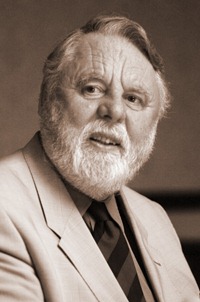Story of a photo.
 My last two working days were spent at a team “off-site” – and these things tend to bring out the curmudgeon in me (as I’ve said before). Past experience sends me in braced for a combination of people mumbling their way through 10,000 word PowerPoint decks on their subjects, prepared without a moments thought about what the audience might be interested to hear, and the kind of “organized fun” which makes one wish one had booked a visit to the dentist.
My last two working days were spent at a team “off-site” – and these things tend to bring out the curmudgeon in me (as I’ve said before). Past experience sends me in braced for a combination of people mumbling their way through 10,000 word PowerPoint decks on their subjects, prepared without a moments thought about what the audience might be interested to hear, and the kind of “organized fun” which makes one wish one had booked a visit to the dentist.
This weeks event stated with Giles Long, a swimmer who won Gold medals at two paralympics. I don’t think it’s overstating things to call him brilliant. He is working as an ambassador for the 2012 games – and if he weren’t I say they should sign up for the job. Come the evening, we had a second guest speaker before dinner. It was Terry Waite. I realize that if you’re reading this from outside Britain you might need look him up on Wikipedia. A remarkable man, with a remarkable story to tell, and a style of delivery to do it justice. I can’t remember seeing an audience so completely spellbound. I’ve seen people hang on a speakers every word, but it was always punctuated with laughter or applause, saying a speaker was “heard in silence” normally implies a background of shuffling and fidgeting, but not here. For over an hour you could have hear a pin drop. It’s rare to feel that something work sets up is a privilege but I wasn’t the only one who felt that way.
This post is not meant to be a critique of the idea of off-sites, or even the story of how my expectations got turned on their head at this one, but to be the story of this picture. I was asked to take my camera and had the new Pentax K7 with my 18-250 Zoom mounted on it : this lens is a bit of a Swiss Army Knife: very versatile, but there are some jobs which require the right tool. I snapped a few pictures at the start of Terry’s speech, but wasn’t happy with them. My other lenses were in the car: leaving the room to fetch one might have seemed rude, and anyway I didn’t want to miss what was being said. When he sat down I dashed down out and fetched my Pentax 77mm f/1.8 limited lens. Those who know reckon the Pentax limiteds are the best autofocus lenses ever made (owners just smile when people mention Canon’s “L” glass). I needed the extra speed because because the venue turned the lights down, and using flash would just look horrible, as well as being intrusive. Very low levels of artificial light tax an autofocus system and the K7 doesn’t have much in the way of manual focus aids, yet with very little depth of field to work with the focus has to be pretty much perfect. With the slower zoom lens the amount of light getting in would be less than the autofocus system needs to work – the K7 does have a focus assist lamp, but that that’s intrusive too.
As well as letting more light in, with the crop factor on a digital SLR, the 77mm is ideal for the semi-candid photos I wanted: when someone is your guest it seems wrong to be shoving a camera right in his face. In fact I cropped the picture giving something more like a 180mm lens’ view on 35mm film. Even at an ISO rating of 1600 and an aperture f/1.8 it needed a 1/25th second exposure - which would be hopeless without the K7’s in-body shake reduction. (I may be wrong on this, I don’t think anyone makes a stabilized, fast prime at this focal length: Putting stabilization in the body –as Pentax, Sony and Olympus means every lens stabilized which is a real winner at times like this.) Even so it’s not perfectly sharp and the high ISO is noisy – more so because of the cropping. But it’s a picture I’m mighty pleased with.
In converting to monochrome I’ve tweaked brightness and contrast slightly and just given a hint of warm toning (my technique is to set a colour which is noticeable, and then halve the amount). I haven’t applied any noise reduction or sharpening. – though I might when I come to print it (I might split tone it with warmer whites and cooler blacks then too.) Is it just down to equipment ? Certainly without the combination of lens, and shake reduction and modern cameras’ capabilities at high ISO meant I could shoot by available light – without them using flash would have given no chance to get something as natural as this. What does the photographer contribute? Decide how they envisage the result, choose where to stand and pick what Henri Cartier-Bresson dubbed the decisive moment, if there is a learnable skill in picture making (as distinct from camera operation) , it is being ready for those moments when they present themselves.